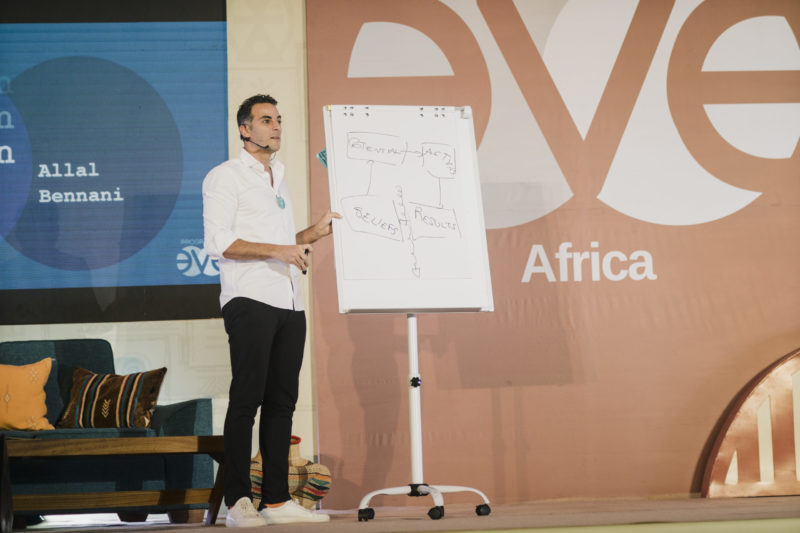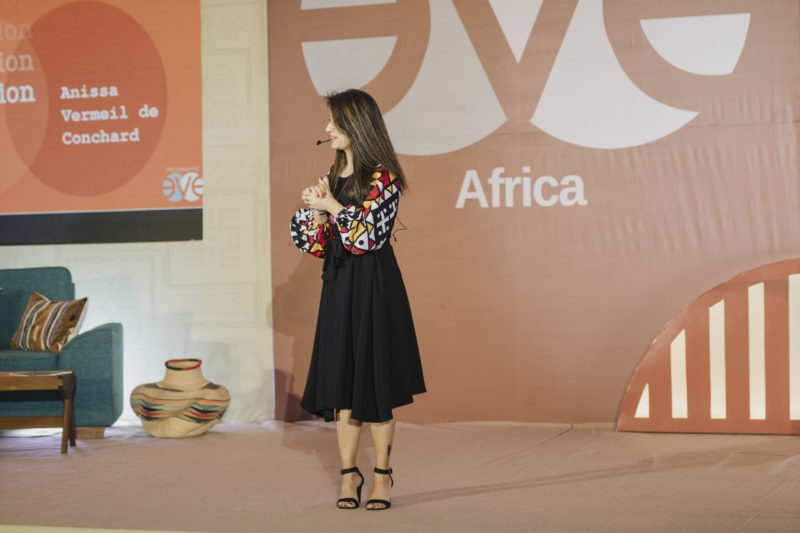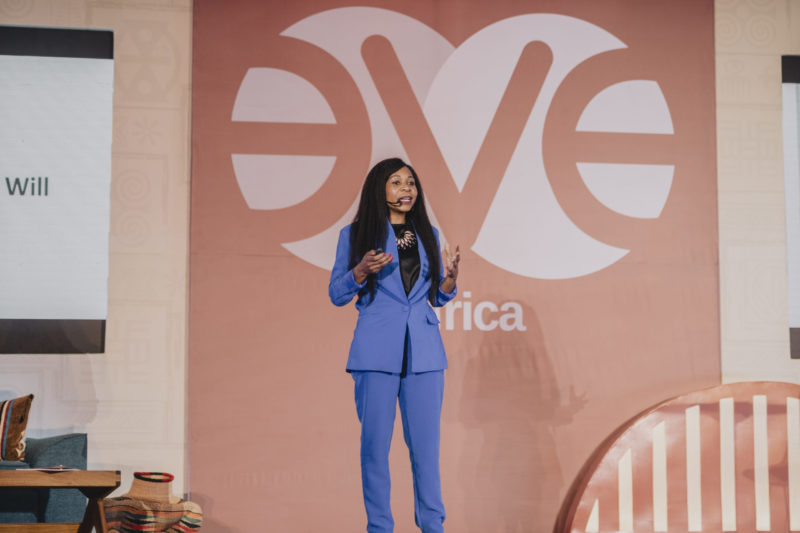For many years, people trying to change attitudes to stereotypes (in terms of gender, as well as generational, cultural, etc.) stumbled upon difficulties, if not blockades (at least in the short-term) when they attempted to change collective mentalities. Then, research in cognitive science and social psychology was able to approach the issue from a new angle: What if the real problem wasn’t the stereotypes, but how they influence our decision-making? So, without sitting around and waiting for the collective imagination to stop assigning specific and limited attributes to certain categories of the population, we can now take action to combat those decision-making biases.
But what exactly are “decision-making biases”? How do they work? What can we do to change how we make decisions so that they reflect our free will, and avoid being swept away in the tide of public opinion? How can we help individuals free themselves of decision-making biases to enhance the collective imagination?
Introduction: Let’s define the terms to avoid confusion
Stereotypes and biases share the same starting point, but aren’t exactly the same thing. Let’s take a closer look.
Stereotypes are a set of attributes generally (or mostly) associated with a certain category of the population: Women are talkative and sensitive; they have a maternal instinct but no sense of direction, and are able to multi-task. Men are selfish, authoritarian, obsessed with sex, have professional ambition but no sense of empathy, etc. Stereotypes deny individual singularity and depict society as a still-life painting, a motionless canvas of role and function assignment.
Biases are attitudes based on incorrect or distorted elements (whose collective beliefs are stereotypes), and lead to errors.
Biases: An unfortunate slip of the scissors
In the language of craftsmanship, especially trades that involve cutting (sewing, woodwork, metalwork, etc.), the word “bias” refers to an action that doesn’t follow a straight line, perhaps beveling or even an unfortunate slip of the scissors that wastes time or precious fabric. The idea of serendipity certainly teaches us that great inventions can stem from errors and wrong paths, but in manual arts and crafts, it’s obviously not profitable to cut diagonally through materials that are to be transformed into clothes, or planks of wood that are to be made into furniture.
This reminder of bias in the world of crafts is a symbol for HR or managerial functions: biases are skewed decisions that waste resources (the most valuable of all: human resources) and create hermetic and dysfunctional systems.
The “violence” of bias: an invisible element in discrimination and a fundamental diversion of free will
To tackle the issue of bias, we need to trace its etymology: bias comes from the Greek βιά, which simply means “violence”. It’s no accident that the word has become associated with the fight against discrimination. The word is used to describe invisible obstacles that trip people up and/or force them into taking bypasses on their social and professional paths. And that’s exactly what the metaphor of the glass ceiling in terms of women’s careers refers to, or Elia Kazan’s “invisible wall”, with regards to anti-Semitic undercurrents.
While bias is experienced as genuine violence for those who suffer from its effects, it’s no picnic for those who practice it either. Because most often this violence goes against the person’s intention: with the exception of a few sadistic lost causes, nobody discriminates for pleasure. And that’s the real power of bias: because it’s unconscious it makes us act against our free will, even our deepest convictions. We put ourselves into a challenging situation of cognitive dissonance when we understand that the effects of our decisions actually go against our intentions.
But where do our decision-making “biases” start?
Why do we insist so much on making ourselves so miserable, dragging along all those who are affected by our decisions, when our conscious mind and values are pointing us in the right and fair direction? For the answer to that, we need to turn to cognitive sciences and Jean-François Le Ny. According to the pioneer of cognitive psychology, the errors we make in perception, interpretation and evaluation are apparently the result of how our cognitive system processes information: what we already know and believe forms the basis of how we handle new information. Le Ny goes on to explain that we start by “selecting” what matches how we see the world, then we unconsciously – without even seeing or hearing it – push aside what doesn’t fit with our belief system.
Stereotypes, firmly engrained beliefs
Stereotypes occupy a very important role in our intrinsic belief system. And neuroscience explains that very clearly: from the very day we are born, our “intelligence” is built up gradually, categorizing what information our senses provide.
Mommy takes care of me most often, so anyone who looks like her (other women) goes into the “care” box. Daddy’s voice is loud and firm, so anyone who looks like him (other men) goes into the “authority” box. Grandpa is as deaf as a post, so anyone who looks like him (old people) goes into the “deaf” category. My 22-year-old auntie likes breaking the rules, so anyone who looks like her (young adults) goes into the “unruly” category. My uncle is in a wheelchair, so anyone who looks like him (people with disabilities) goes into the “person sitting down who has a reserved parking space” box (even though in reality, 80% of disabilities are invisible), and so on.
And that’s how stereotypes are created and engrained, constantly enforced by a collective culture that affirms (or rather rationalizes) these initial beliefs.
Thinking fast and slow: the brain’s amazing ability to switch from lazy comfort to curious discomfort
Social psychology researcher and director of AlterNego Patrick Scharnitzky explains that 89% of us think we are subjected to stereotypes and 84% admit to conveying stereotypes. We can’t help ourselves!
But all is not lost, reassures Scharnitzky, (an Eve Program speaker) as he presents the work of Nobel Prize for Economic Sciences winner Daniel Kahneman and his colleague, psychologist Amos Tsversky. In contrast to the old belief that there was a separation between the “right brain” and “left brain”, which provides a pseudo-rationalization for gender stereotypes, (the right brain is said to be intuitive and feminine, the left logical and masculine), Kahneman and Tversky focus on two thinking speeds.
We have a quick, instinctive and emotional system, which is there to help us survive (when you come across a crocodile in the jungle, you don’t wonder if it’s male or female, you run away as fast as your legs will carry you!) and to provide security (living and interacting with people just like myself is a source of comfort and reassurance), while being inherently lazy (because dealing with the unknown, or some kind of difference takes effort.) There is also a slower and more logical system. It’s more introspective, more curious, and makes us wonder about where our views come from, encourages us listen to what we weren’t expecting to hear, take an interest in what we don’t know and find stimulation in discomfort.
The Scharnitzky method of thwarting decision-making biases
The challenge presented when making the right decisions (especially those that encourage inclusion) is to trigger the slow system each time we make a decision that might affect another person.
In order to do that, Scharnitzky suggests a 10-point approach:
– Be realistic enough to accept your stereotypes: We all have them, so it’s about time we stopped feeling guilty or defensive, and started making peace with our prejudices, leaving space for an intelligent discussion with other people about the matter.
– Always question how your opinions were formed: Be aware of what influences you and wary of what you hear from sources of authority (journalists, experts, statisticians or doctors with multiple degrees don’t always tell the whole truth about an issue)
– Get cultured: If you’re constantly feeding your “slow” brain with new information, your “fast” brain is overridden, which may “re-categorize” the thoughts it initially generated when the stereotype dominated your thought process.
– Doubt: Just because someone else is wrong, that doesn’t mean that you are right. And vice versa.
– Stay motivated: When the brain’s “slow” system has to face discomfort, it is rewarded by stimulation… So it needs the satisfaction of a “challenge” to stop it from giving up, and allowing its neurons to zone out!
– Beware of first impressions: Gut feelings and instincts can be useful when analyzing a situation, but mustn’t be used as a method for making decisions. If you’re not careful about first impressions, there’s a high risk of going into a personal echo chamber, which feeds the fast brain!
– Look after your body: The fast system needs comfort. And when it’s tired, hungry, thirsty or sick, it is less able to call upon the slow system.
– Lighten your thought burden: When you’re interviewing a candidate for a job, try not to think about buying cat food, paying for the children’s school lunches, how fed up of your husband you are, or that your to-do list is four sides of A4 in size 8 font. Try to stay focused on whatever you are doing, wherever you are, and ensure you are devoting all your attention to the other person.
– Stay in control of your emotions: Acknowledge them, obviously (because they are part of life, and an even greater part of human interaction) but don’t let them get the better of you! “Anger is a bad counselor”, said the philosopher Jean-Marc Rives, and the temptation to yield to it isn’t a great help in decision-making.
– Take your time… The right decision is never made quickly. It requires thought, measured consideration of the pros and cons (but avoiding an excessively binary system), perhaps asking another person for their input. Procrastination can also be helpful. That’s when you put off until tomorrow what you could have done yesterday. It’s not good to avoid dealing with an issue, but it can be useful to spend some time letting an idea mature in your head.
A paradox in fighting biases to decision-making: act fast but act right (and at the lowest possible cost while you’re at it)!
When these ideas and approaches are presented to employees during training sessions, they usually get an enthusiastic response… Followed by a reality check about the demands made on managers in a context of upheaval involving a traditional culture based on instant results, and a culture that needs to be nurtured for long-term sustainable performance.
You’re telling us to question where we form our views, but in our industrial environment the last engineer to speak is always right. You tell us to stay fit and healthy, but presenteeism is still the best way of making sure we’re visible (and in the running for promotions). You tell us to lighten our thought burdens, but the issue has been on the rise for the last 20 years (especially with the increasing number of digital tools which flood our inboxes and other collaborative work platforms with messages to reply to and other tasks to complete). You tell us to procrastinate, but there’s fierce pressure to react to all kinds of situations urgently!
Yes, the fight against decision-making biases has come to a painful and paradoxical crossroads: making fair and right decisions takes time and mental availability, but quick fixes and our performance-based culture that still dominate far too many businesses clearly go against this common sense observation.
There’s a lot to think about: transforming business cultures, dismantling decision-making biases… And fighting against stereotypes!
Individuals alone can’t be expected to rally the troupes in the battle against biases. Leaders and other role models certainly have the power (and perhaps even the duty) to set the right example for those they supervise, but there will always be obstacles to their action if there is no global transformation of business cultures.
So now it’s time to set aside what gets in the way of individual decision-making processes that are fairer, more precise, more creative and innovative: to put an end once and for all to the imagery of the superman leader, the culture of presenteeism, the narrow view of what constitutes performance (from the undisputed superiority of business school graduates to the obsession with bringing in revenue, not forgetting cost-killing in terms of both salaries and relationships with suppliers), to a baron confrontation between nature and culture, body and mind, emotion and rationality, intellectualism and pragmatism.
This groundwork on business culture needs to be backed up by the determination to fight the spread of stereotypes that constantly send counter-messages to individuals and companies that strive to create and nurture a culture of inclusion: the never-ending adverts that shoe-horn women into the domestic environment and/or exalt superhuman masculinity (out of reach for ordinary men); scenes that associate the old with being wise, as well conservative, and young people with being agile as well as idealistic; imagery that shows Asians as being technologically skilled but struggling with how to live, North Africans as being sensual yet disorganized, Blacks as having a sort of childish joy about them, underscored by concealed aggression, heavier people as unable to control themselves and suffering from a lack of self-esteem, while being overly friendly, etc.
It’s now time for inclusion that respects individual characteristics and leaves room for people who want to resist their decision-making biases, to offer a richer, more open and more productive environment.
Marie Donzel, for the EVE webmagazine. Translated from French by Ruth Simpson.
[RS1]Le titre du livre de Kahneman en anglais.






